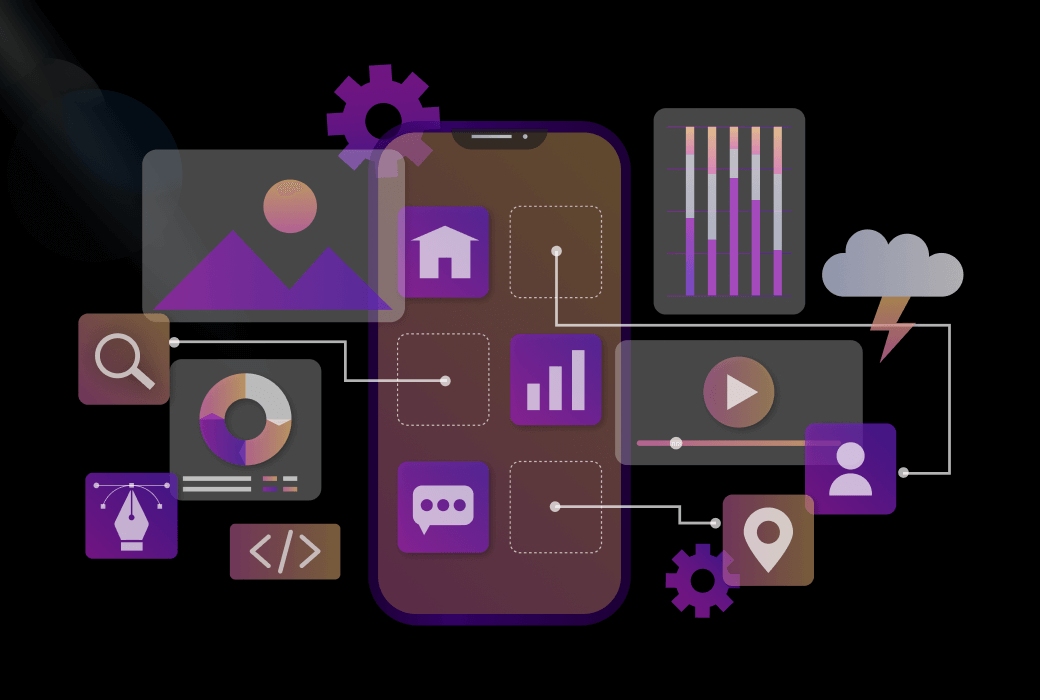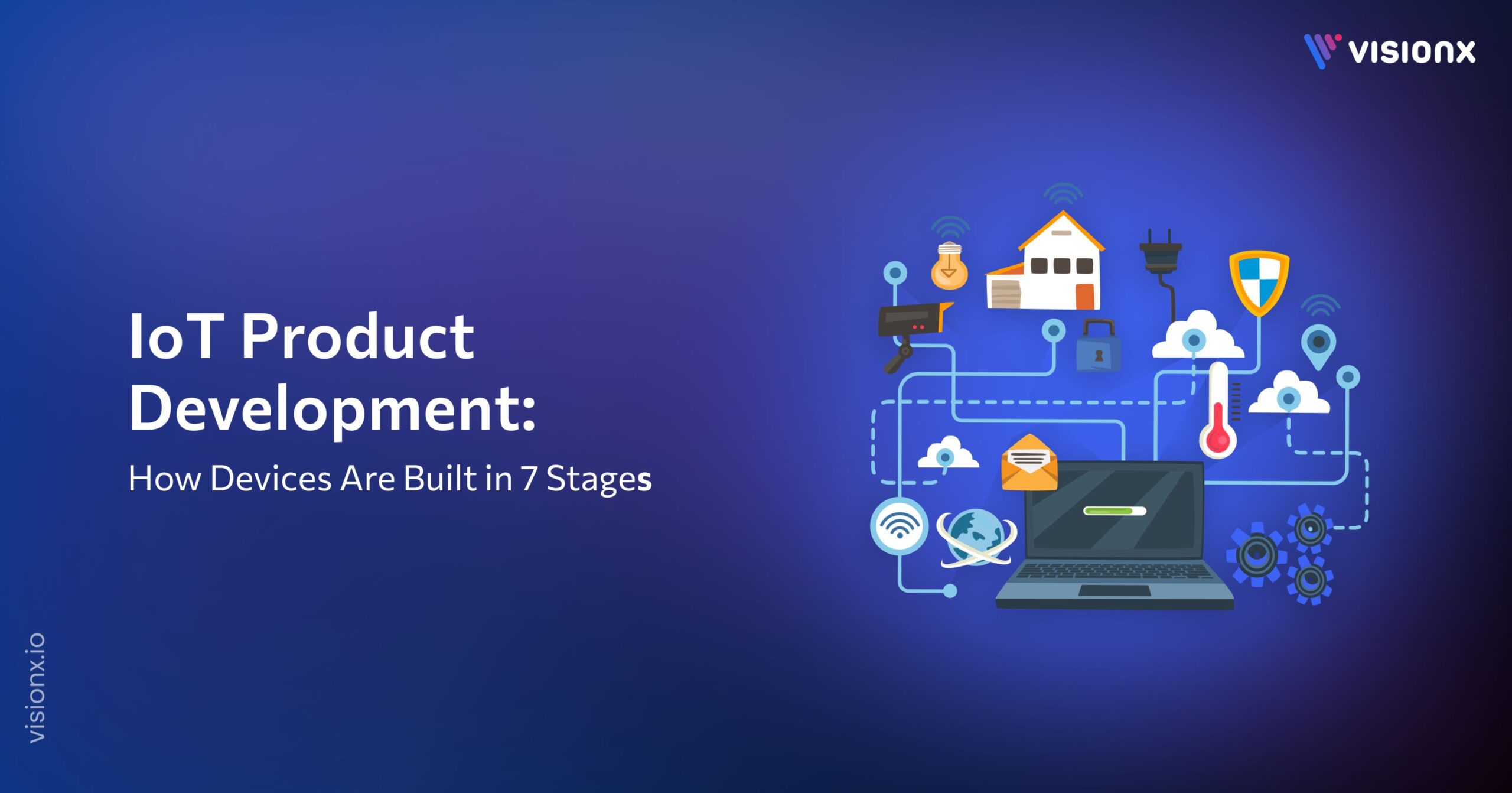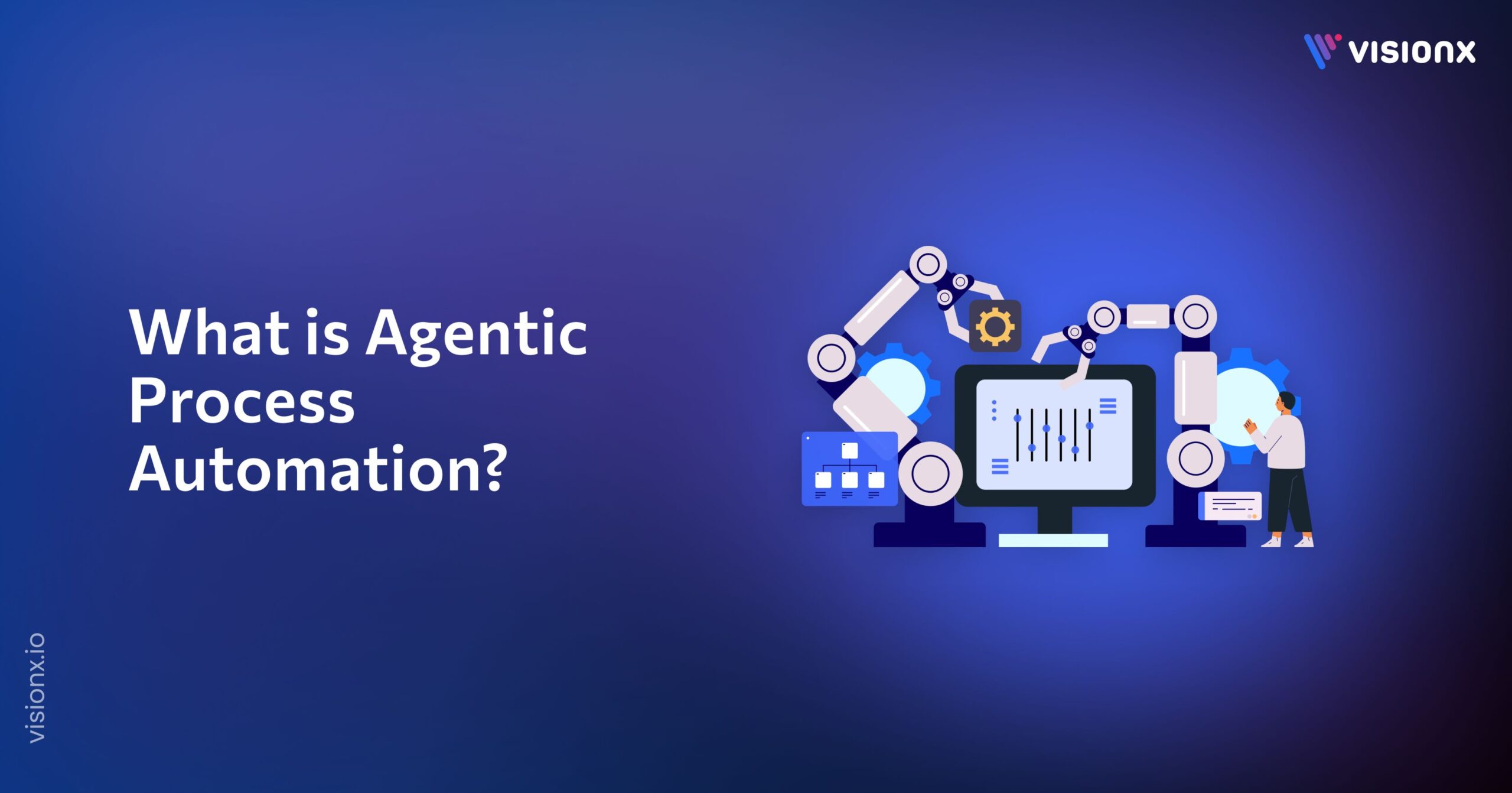In Today’s world, which is filled with technological convergence and digital vista, app development for mobile devices is witnessing phenomenal growth. This is because, with changing technologies and increasing user demands, there is always pressure on developers and companies. They must conform to new mobile app development trends to keep their applications afloat.
Not adapting to such trends will lead to redundancy in features, loss of user interest, and, eventually, the app’s failure. But there’s always a solution. Understanding and embracing top mobile app development trends for the year will enable developers to enhance their applications and meet changing demands from different users.
To know more about the top 12 trends shaping the mobile app industry for 2024, read this blog to get an idea of how to succeed with them. We will also analyze the global need for mobile app development services and how VisionX can help you keep up with the relevant changes in this area. Let’s dive in and discover how you can keep up with the emerging mobile app development trends!
Top 12 Mobile App Development Trends
Some of the most recent mobile app development trends include the following:
1. No-Code and Low-Code Development
No-code and low-code platforms are changing how an application takes shape because they now allow a user to create apps using visual interfaces and pre-built templates. Therefore, a considerably lower level of conventional coding is required. The democratization of application development has opened the participation of business analysts and marketers.
2. AI and ML
AI and ML are critical components of mobile applications, which develop more functions and usability. The primary advantage of these technologies is that they allow applications to learn the behavior and likes of users, thus offering tailored recommendations and content.
For example, AI in e-commerce applications is designed to provide product recommendations to customers depending on their previous views, thus enhancing customer experience and increasing sales.
3. AR and VR
AR and VR are fundamentally changing the way users interact with mobile applications because of virtual immersion, which simultaneously combines the real world and the imaginary world. For instance, Pokémon GO and other related apps have demonstrated how augmented reality can be used to advance gameplay in the real world through the superimposition of digital elements.
4. 5G Technology
The 5G network rollout brings new horizons to mobile app development. With much faster internet speeds and lower latency than their predecessors, the 5G ecosystem supports real-time interaction for applications in cloud gaming, AR/VR, and live streaming with no buffers.
Now, developers can develop data-intensive, responsive, and interconnected apps without generating performance lags. For health care and manufacturing, 5G completely opens up remote monitoring and real-time communication for improved efficiency.
5. Increased Focus on Mobile Security
With mobile applications managing more sensitive information, it has become imperative that security be a top priority. In this regard, modern developers incorporate specific features.
These include multi-step user authentication via biometric factors, fingerprint and face recognition, and encryption strength several times higher than the competition. Policies and laws like the GDPR and CCPA impose an obligation on developers to protect users’ data.
6. Cross-Platform Development
Programming frameworks like React Native and Flutter allow software developers to create and run one code on any platform, including Apple and Android phones. This phenomenon significantly reduces development time and costs while providing a similar user interface across various devices. Maintaining updates for cross-platform apps also becomes easier as features are implemented with parity across each operating system.
7. IoT Integration
The rise of IoT has accelerated the innovation of smarter applications, allowing users to interact with connected components like smart thermostats, security systems, and health monitors through their phones.
These applications offer interactivity by providing information, notifications, and automated functions behind the scenes, as integrated IoT technologies are crucial for the smart home, health, agri-food systems, and networks within industries.
8. Wearable App Development
With the increasing trend of wearables, including smartwatches, fitness bands, and health monitors, the design of companion mobile apps is more in demand these days. In addition to providing instant data related to physical fitness, health, and active daily lives, such wearable apps enable users to monitor wellness objectives.
They can even detect potentially adverse conditions. As wearable devices continue to improve, these apps extend into all areas, including healthcare, with remote patient monitoring and chronic disease management.
9. Sustainable and Eco-Friendly Apps
Such applications include carbon footprint tracking, green-friendly practices, and energy-saving aids. Many apps are developed in such a way that they do not require a lot of energy and even facilitate minimal usage of resources by devices for cloud-based processing. In this regard, the developers will benefit the environment by attracting consumers interested in sustainable products and services.
10. Cloud-Based Mobile Apps
Cloud applications utilize cloud resources in an optimal way for increased functionality as well as improved user experience. Such applications keep the data in the cloud instead of attempting to use an electronic device’s internal RAM or storage. This allows the user to access the data on any device with an internet connection since the data is only kept in the cloud.
This ease of accessibility makes cloud applications perfect for work processes that require sharing information in real-time, which also involves managing data and storing files, as in the case of applications like Google Drive, Dropbox, or Microsoft 365.
11. On-Demand Apps
They serve consumers’ growing demand for instant services, such as delivering food to your door while taking you elsewhere through ride-hailing and services to get you home. The apps connect actual users with providers, allowing instantaneous and seamless transactions between the users.
The growing trend of on-demand apps increases access to services, cuts down waiting time, and offers highly personal experiences. Popularized platforms, including Uber, Lyft, and DoorDash, are further driving growth within an on-demand model in the aspects of healthcare, transportation, and education.
12. Enhanced User Experience (UX)
Competition in the app market has made it highly challenging to provide users with a perfect user experience that sets one app apart from the other. Developers are becoming increasingly aware of intuitive app design and keeping their interfaces more responsive, smoother, and faster loading times.
Ultimately, user-centric design enables developers to increase the usage of an app, raise retention, and thus strengthen the overall performance of the app by getting better reviews and higher adoption rates.
Is Mobile App Development in Demand in 2024?
Yes, it keeps flying high as companies begin to understand the opportunities of having an existence on mobile. As more and more people buy smartphones, daily activity depends largely on apps, ensuring a healthy market for developers.
Recent surveys have shown that 85% of businesses have a backlog of mobile app projects. Therefore, this creates a sense of urgency in terms of more applications than can be seen at the present supply; this indeed creates major difficulty in hiring good developers.
With mobile app sales projected to reach $99 billion, it is no wonder that companies are moving even more toward mobile technology in the quest for higher revenues and more customer loyalty. As a result, the landscape for mobile app developers is vibrant and filled with opportunities.
Are Mobile App Developers in High Demand?
In 2024, great demand for skilled mobile app developers exists because firms in various sectors require personnel who can develop engaging, high-performance applications.
Growing reliance on mobile applications for personal and business use is creating further demand. Companies need developers who have some expertise in AI, AR/VR, and cloud computing areas. The growing shortage of good talent results in competitive recruitment strategies along with lucrative compensation
Given the promising statistics about mobile app sales, which are expected to hit billions in a few years, innovation and growth are promising.
What is the Future of Mobile App Development?
In the mobile app development domain, the future growth trends will be determined by over-dependence on AI for customization, the security aspect of mobile applications with blockchain, and more AR/VR features. When 5G is finally and globally embraced, it will do a lot more than facilitate very rich applications; it will make functions that are not particularly creative but rather unique due to their speed.
How Can Visionx Keep You Updated on Mobile App Trends?
It is really crucial for companies to remain in the competitive landscape while entering 2024 by following mobile app development trends. However, such trends in AI or cross-platform, for example, can be capitalized upon by companies to add value to their business practices and provide a commendable user experience in this changing digital world.
VisionX provides mobile app development consulting services, which enables companies to monitor current mobile app development trends and technologies. The company’s competency includes providing recommendations about emerging AI, blockchain, and cloud computing technologies that are expected to alter mobile application development.


